Exploring the Bond Between Cats and Humans
Dive deep into the captivating world of feline behavior, unraveling the layers of mystery surrounding their interactions with humans. From ancient civilizations that worshiped them to modern households that cherish them, cats have maintained a special bond with humans. But what drives this bond, especially when a feline follows its owner around?
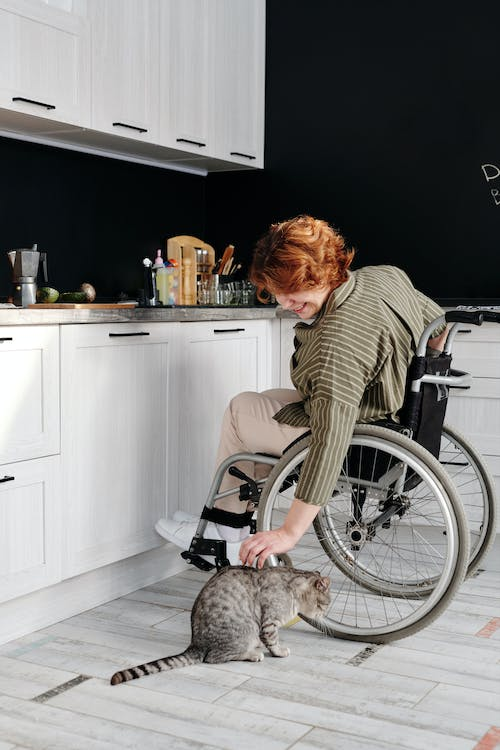
Key Takeaways:
- Throughout history, cats have been associated with various mystical and spiritual beliefs, elevating their status beyond mere animals.
- Just like humans, cats exhibit a range of attachment styles, driven by both their environment and their intrinsic nature.
- A cat following you could be expressing its love or merely marking its territory. Distinguishing between the two can enrich the human-feline relationship.
The Historical and Spiritual Connection Between Cats and Humans
Tracing back to ancient civilizations, cats were revered, sometimes even worshiped. This historical reverence has sewn spiritual meanings into the feline’s essence, allowing modern society to view them as more than just pets.
- Egyptian Worship: Ancient Egyptians venerated cats, associating them with the goddess Bastet, symbolizing protection, fertility, and domesticity.
- European Superstitions: In medieval Europe, cats, especially black ones, were both revered for bringing good luck and maligned as witches’ familiars.
- Asian Symbols: In parts of Asia, cats are considered to bring prosperity and ward off evil spirits.
Cat Behavior: Affection vs. Territory
While cats might cuddle or follow you, interpreting their behavior can be complex. Is it genuine affection, or are they marking their territory?
- Marking Territory: Cats have scent glands on their cheeks, and rubbing against you might be their way of marking you as “theirs.”
- Purring and Cuddling: Often seen as a sign of contentment and affection, though sometimes, it can also indicate distress or discomfort.
- Following and Shadowing: While following might be territorial, it can also be a cat’s way of seeking company, security, or even just expressing curiosity.
Evolution of Feline-Human Interactions
From the wilderness of the jungles to the warmth of our laps, cats have undergone a fascinating journey. Understanding this evolution offers insights into their present-day behavior.
- Wild Beginnings: Cats began as wild predators, independent and resourceful.
- Domestication Process: Human civilizations provided food security, leading cats to gradually adapt to human proximity.
- Current Companions: Today, they are our cherished pets, yet their wild instincts sometimes surface.
From Wild Predators to Domestic Companions: The Feline Journey
The tale of the cat is an evolution from fierce wilderness to domesticated affection. Their journey from the jungles to our homes is a testament to adaptability and survival.
- Survival Instincts: Initially, cats approached human settlements for food, displaying their prowess as rodent controllers.
- Mutual Benefits: Humans provided food and safety, while cats offered their skills in pest control, leading to a symbiotic relationship.
- Breeding and Varieties: Over time, intentional and unintentional breeding led to the diverse varieties of domestic cats we see today.
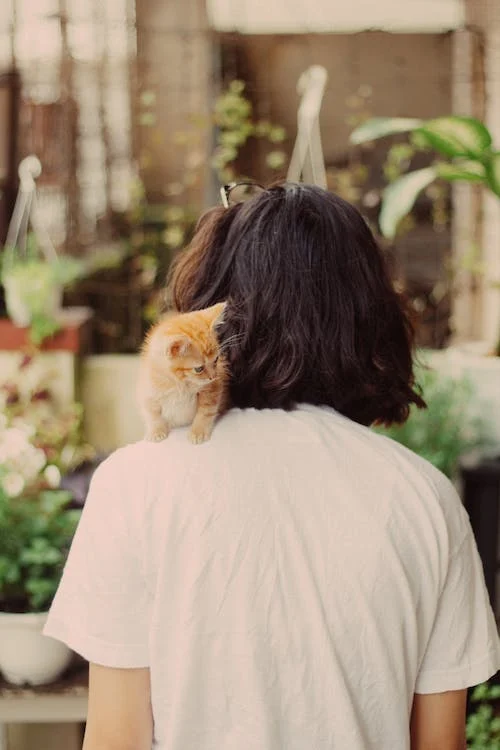
Attachment Styles in Cats: The Behavior Behind the Bond
Why is one cat a lap cat while another prefers solitude? Attachment styles in felines can be as varied as those in humans, shaped by both nature and nurture.
- Secure Attachment: Just as with humans, a cat with a secure attachment feels safe and secure, often evident when they seek comfort from their owners during stressful times.
- Avoidant Attachment: Some cats might seem aloof or independent, preferring solitude or only seeking interaction on their terms.
- Anxious Attachment: These cats might often seem clingy, following their owners persistently, indicative of their reliance on their human for reassurance.
Understanding Feline Attachment Signals
Cats have their unique way of expressing attachment. Recognizing these signals can enrich the bond shared with your feline friend.
- Kneading: Often a sign of contentment, this behavior traces back to kittenhood, where kneading around their mother’s teats stimulated milk flow.
- Head-Butting: A gentle nudge or a head-butt can be a cat’s way of expressing affection and marking you with their scent.
- Following and Staying Close: A clear indicator of attachment, this behavior suggests that your cat feels secure in your presence and might be seeking companionship or reassurance.
Spiritual Beliefs and Cats: Unraveling the Mystique
Across different cultures and ages, cats have been imbued with spiritual significance. Their mystique is not just a product of their graceful demeanor but also centuries of reverence and awe.
- Cats and Divinity: In various cultures, cats were often seen as divine creatures or associated with deities.
- Symbolism: Cats, especially black ones, have been symbols of mystery, magic, and even the supernatural in various societies.
- Spiritual Companions: Many believe that cats have an innate ability to sense energies, making them spiritual barometers of sorts.
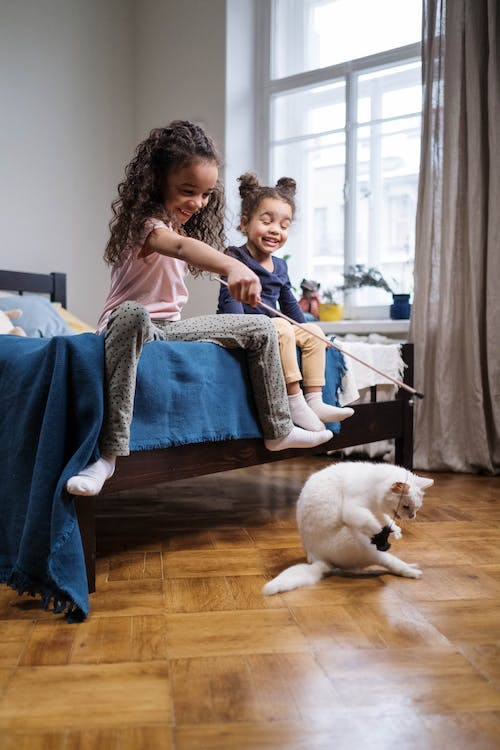
Cats in Mysticism and Spirituality
The spiritual realm has always been fascinated by felines. From being revered in ancient religions to being considered mystical in folklore, cats occupy a special place in spirituality.
- Egyptian Divinity: Cats were not only worshiped in ancient Egypt but also mummified and buried with honors.
- Asian Luck Charm: The “Maneki-neko” or the beckoning cat is a common talisman believed to bring good luck in various Asian cultures.
- European Witchcraft: In medieval times, cats, especially black ones, were believed to be witches’ familiars, leading to many superstitions.
Decoding Feline Behavior: From Purring to Pursuit
Beyond their spiritual significance, understanding everyday cat behavior can offer insights into their psychological world. From the soothing purrs to the playful chases, each behavior has a tale to tell.
- Purring: While often a sign of contentment, purring can also be a cat’s way of seeking attention or expressing discomfort.
- Chasing and Hunting: Even domesticated cats retain their predatory instincts, often evident in their playful pursuits or fascination with moving objects.
- Grooming and Licking: Grooming is not just about cleanliness. Cats groom to mark territory, show affection, or even establish hierarchy.
The Role of Trust and Familiarity
Trust plays a pivotal role in how cats interact with their surroundings and their human companions. A trusting cat is more likely to be relaxed, affectionate, and display secure attachment behaviors.
- Building Trust: Positive reinforcement, patience, and consistent care can help build trust with a feline.
- Signs of Trust: A cat exposing its belly, slow blinking, or resting close to its human are strong indicators of trust and contentment.
- Betrayal of Trust: Negative experiences can lead to a breach of trust, making it imperative for cat owners to avoid punishment or aggressive behaviors.
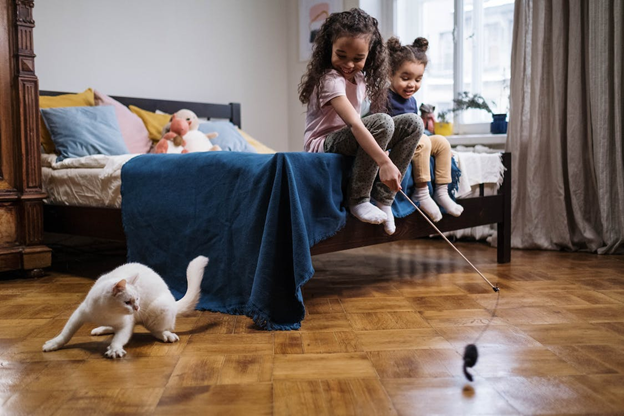
Subtle Cat Communications: Body Language and Vocalizations
Cats have a myriad of ways to communicate, from nuanced body language to varied vocalizations. Understanding these subtle cues can greatly enhance the bond shared with your cat.
- Tail Movements: A raised tail usually indicates a happy and confident cat, while a tucked or lashing tail can suggest fear or aggression.
- Ears and Whiskers: Forward-facing ears and whiskers indicate curiosity or alertness, while flattened ears can be a sign of distress or fear.
- Meowing and Chirping: While meowing is primarily a cat-to-human communication, chirping or trilling can be a sign of excitement, often seen when they spot birds or other prey.
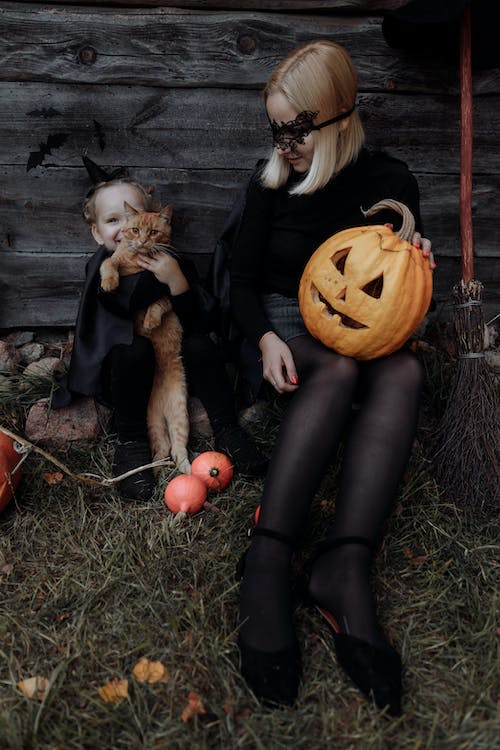
FAQs
Why does my cat seem more attached to me than others in the household?
Cats form individual bonds based on personal experiences and interactions. A cat may become more attached to a particular person due to positive associations, consistent care, or even individual preferences based on the person’s behavior, scent, or even voice.
What spiritual meanings are associated with black cats?
Across various cultures, black cats have been symbols of mystery and magic. While some societies considered them harbingers of bad luck or associated them with witchcraft, others saw them as protectors against evil spirits and bringers of good fortune.
How can I foster a stronger bond with my cat?
Building a bond with your cat involves trust, patience, and understanding. Regular play sessions, positive reinforcement, understanding their behavioral cues, and providing a safe environment can help in fostering a deeper connection.
Why does my cat follow me to the bathroom specifically?
Cats are creatures of habit and curiosity. They might follow their owners to the bathroom due to a mix of curiosity, wanting to be close to their primary caregiver, or simply because it has become a routine. Additionally, bathrooms are typically cooler, and the tiles might be appealing to them.
How can I ensure my cat feels safe and secure in its environment?
Ensuring a cat’s safety involves providing a stable environment, regular feeding schedules, safe hiding spots, and toys. Avoiding loud noises, sudden changes, or aggressive behaviors and introducing any new elements or pets gradually can also help in making them feel secure.
References:
“Cat’s Cradle by Kurt Vonnegut”. Banned Library. Retrieved October 6, 2018.
Jung, C.G. (1964). Man and His Symbols. Doubleday.
Leave a Reply